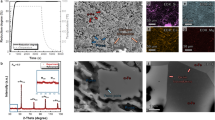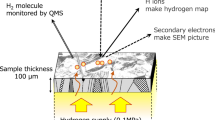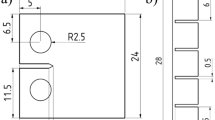Abstract
A CHANGE in the hardness value of a steel due to the presence of diffusible hydrogen has been detected and found to be in agreement with that predicted from the change in the work-hardening characteristics of the particular steel. This change in hardness has not previously been observed1–3.
This is a preview of subscription content, access via your institution
Access options
Subscribe to this journal
Receive 51 print issues and online access
$199.00 per year
only $3.90 per issue
Buy this article
- Purchase on SpringerLink
- Instant access to full article PDF
Prices may be subject to local taxes which are calculated during checkout
Similar content being viewed by others
References
Seabrook, J. B., Grant, N. J., and Carney, D., Trans. Amer. Inst., Min. Met. Eng., 188, 1317 (1950).
de Kazinczy, F., J. Iron and Steel Inst., 177 (1), 85 (1954).
Grant, N. J., and Lumford, J. L., Iron Age (June 2, 1955).
Vaughan, H. G., and de Morton, M. E., Brit. Welding J. (in the press).
Author information
Authors and Affiliations
Rights and permissions
About this article
Cite this article
VAUGHAN, H., DE MORTON, M. Change of Hardness in Steel due to Hydrogen. Nature 177, 1225 (1956). https://doi.org/10.1038/1771225a0
Issue date:
DOI: https://doi.org/10.1038/1771225a0
This article is cited by
-
Theory of hydrogen embrittlement of metals
Soviet Materials Science (1968)



